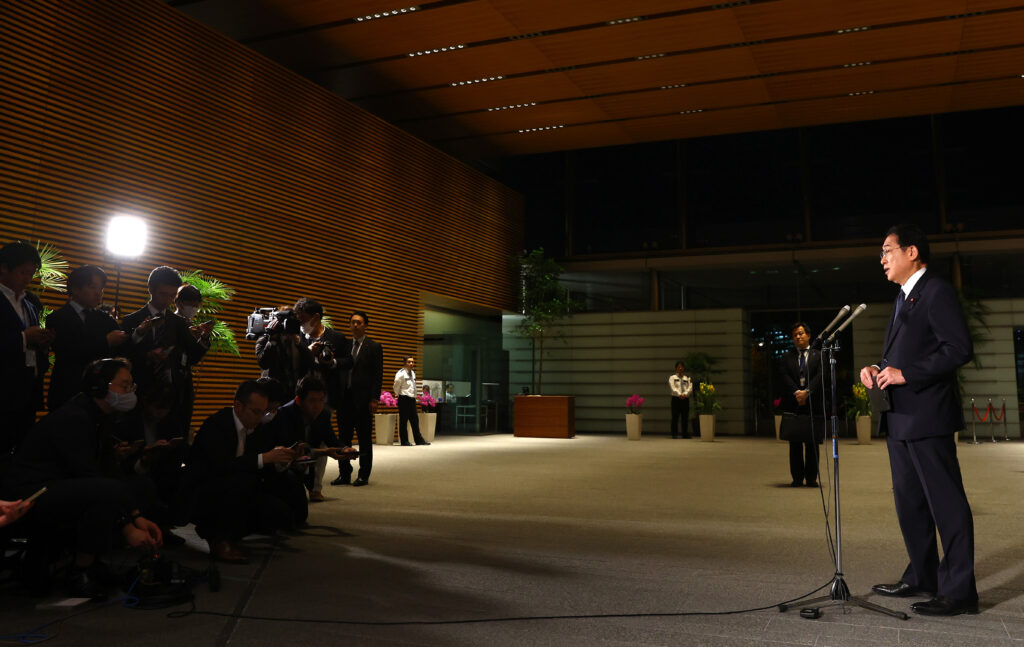
The Yomiuri Shimbun reported on the 30th that the Japanese government is concerned about the impact on its security in connection with the Osprey crash of a U.S. military transport plane off Yakushima Island in southern Kyushu, Japan.
The previous day, the crash of a U.S. military transport plane occurred as the Land Self-Defense Force began preparing for the deployment of Osprey at Saga Airport in northern Kyushu.
The Osprey of the Land Self-Defense Force currently operates 14 units at the Gisaraj Station (Gisaraj City, Chiba Prefecture). The Japanese government is building a base near Saga Airport (Sagashi) and is pushing ahead with a plan to relocate from the Kisaraz base by July 2025 and deploy a total of 17 units.
After the Japanese government decided to introduce the Osprey in 2013, the selection of the site was difficult. In July 2014, the Ministry of Defense asked Saga Prefecture to operate at Saga Airport, but temporarily deployed it to the Gisaraz base from July 2020 after negotiations with local fishermen concerned about the impact on fishing. Since then, fishermen have accepted the deployment plan in November last year, and construction work on the base began in June this year.
The aircraft that crashed the previous day was a CV-22, which was tasked with special operations, different from the V-22 of the Land Self-Defense Force, whose main mission was transportation, but the structure and basic performance of the aircraft are known to be the same, and some Japanese governments say that “the timing of accidents is bad at a time when regional understanding is only in progress,” according to Yomiuri.
In response, the Ground Self-Defense Force immediately canceled the training flight scheduled for the 30th in consideration of local public opinion that has spread anxiety due to the crash of a U.S. military transport plane.
Among the Osprey aircraft, the MV-22 mission has been used for operations in Iraq and Afghanistan for transportation. Based on the MV-22, the Land Self-Defense Force has the V-22, which is a conversion of communication devices such as walkie-talkies into the Land Self-Defense Force specifications.
When asked at the prime minister’s residence the night before whether to suspend the operation of the Osprey owned by the Athletics Self-Defense Force, Japanese Prime Minister Fumio Kishida replied in principle, “It is a task to review and think about what is necessary after checking the actual condition of the accident.”
According to Yomiuri, the Japanese government asked the U.S. to refrain from flying in Japan for the time being when the U.S. Osprey caused an accident off eastern Australia in 2017, and plans to demand the same action this time.
Further delays in the deployment of the Saga airport could affect Japan’s security, so the Japanese government has decided to take care not to worsen local emotions in the wake of the accident, the newspaper said.
Osprey can take off and land vertically, so it does not require a long runway, and it can fly long distances at high speed. The development of Osprey is said to have started in the 1980s in the United States.The intention was to expand the scope of the operation by deploying aircraft that combined the advantages of helicopters and fixed wings.
Yomiuri pointed out that the deployment of the Osprey is indispensable for transporting troops in case of emergency in Japan, facing China, which is strengthening its hegemonic movement.

The Japanese government plans to push for the deployment of the Osprey as it is essential for the defense of the Nansai Islands while expanding its understanding of the area where the Osprey will be deployed through identification of the cause. The Nansei Islands are the front line in which the U.S. military and the Self-Defense Forces will confront China in the event of an emergency, such as China’s invasion of Taiwan.
Defense of the Nansei system is a very important task, a defense ministry official told Yomiuri. “We need to give a polite explanation of the local area to proceed with the deployment as planned.”
Earlier, according to the Korea Maritime Security Agency, a report was received at 2:47 p.m. on the 29th that “Osprey crashed” off Yakushima Island in Kagoshima Prefecture. According to the Defense Ministry, the crashed Osprey is a CV-22 model belonging to the U.S. military base in Yokota, Tokyo, and according to the Defense Ministry, the enemy disappeared from the SDF’s radar at 2:40 p.m. on the 29th.
The Maritime Security Agency rescued one of the eight passengers the day before, but it was confirmed that he was dead, and the search for other passengers is continuing.
Accidents surrounding the Osprey, a U.S. military transport aircraft, have been frequent in Japan before, but this is the first time that there have been deaths.
According to NHK, in December 2016, it was severely damaged after crash landing in a shallow pool near a village in Nagoya, Okinawa Prefecture. In November 2021, a water bottle fell from a plane that took off from Futenma Airfield, a U.S. military base, on a residential site in Kinowan, Okinawa Prefecture. No one was injured, but the residents voiced anxiety and anger. In September this year, two Ospreys made an emergency landing at Shin Ishigaki Airport in Ishigaki City.
SOPHIA KIM
US ASIA JOURNAL



